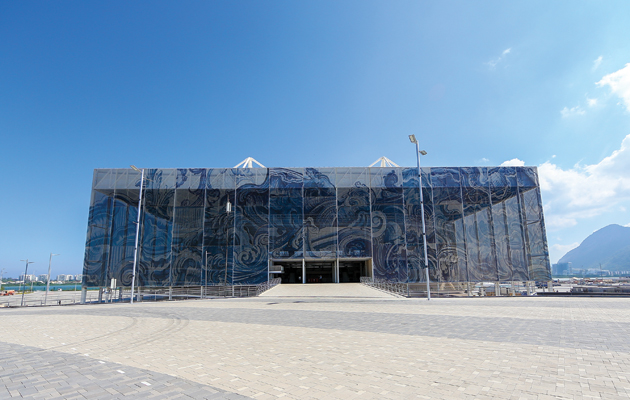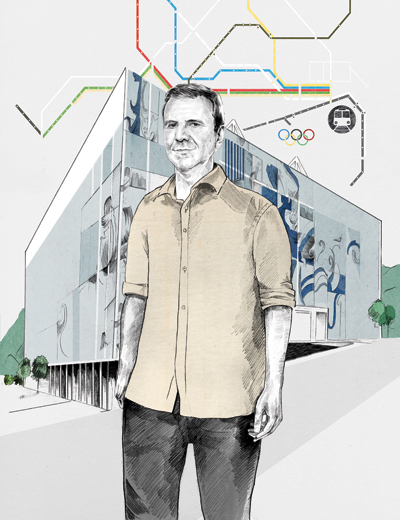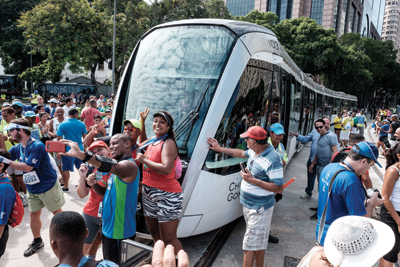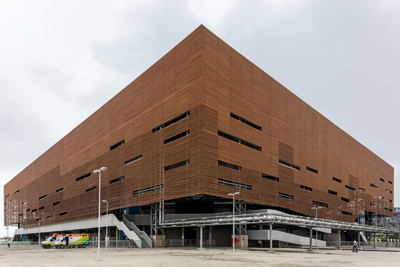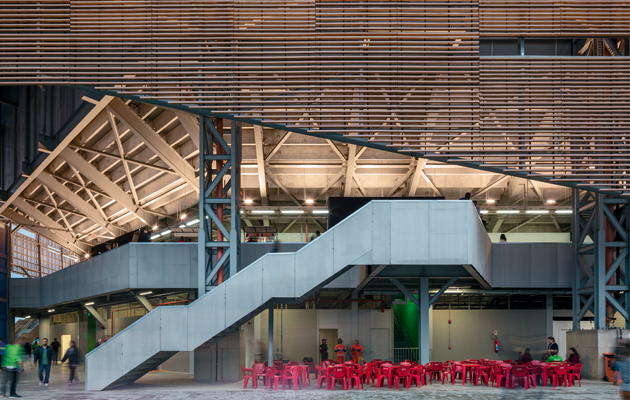|
|
||
|
‘We are not leaving any white elephants behind,’ says Rio de Janeiro’s mayor in the lead up to the Olympic Games Although it was his predecessor as mayor of Rio de Janeiro, César Maia, who organised the Olympic bid, it has been the young Eduardo Paes who has delivered the event. The 46-year-old won an election against the former guerrilla Fernando Gabeira and while now a member of the Brazilian Democratic Movement party, he began his political journey in the Green party, winning an election as sub-prefect for the Barra da Tijuca district where many of the Olympic events will be held. Following his last election victory in 2012, he spent two months in London studying how the event was hosted. On the eve of the Olympics, Icon asked Paes about legacy and what Rio’s unique spirit will bring to the greatest show on Earth.
Eduardo Paes, mayor of Rio de Janeiro ICON What do you understand by the word ‘legacy’? EDUARDO PAES I see the word ‘legacy’ as heritage. A positive heritage, a consequence of a lot of commitment and hard work. This is common sense, and, it should be said, the IOC values – that hosting the Olympics and Paralympics is only worthwhile for a city if, along with the event, it promotes transformations that will benefit the city’s inhabitants. With all the problems we had at the time we entered the bid, we made it clear that Rio would benefit more than the other metropolitan centres in hosting the Games. The Games are an opportunity, a catalyst, to solve questions that had been compromising the quality of life for our citizens for decades. The actualisation of Rio 2016 is definitely allowing for the construction of a noticeable legacy – and part of it has already became reality, part of the life and routine of the Caricoa [inhabitant of Rio]. We like to say that the Games in Rio 2016 are the Games that make savings to the public coffers. At the same time, we are meeting deadlines and we are not leaving any white elephants behind. Most importantly, however, it is the Games with a legacy. ICON Which examples from the history of the Olympics did you look at when preparing the bid and creating your plan? EP Barcelona 1992 is often talked about as the best example of a city making the most of the Games and, for us, Barcelona was the largest inspiration. I always paraphrase Barcelona’s mayor at the time, Pasqual Maragall: ‘The Games should serve the city, and not use it.’ That is the spirit! If we do a comparison between Barcelona 1992 Rio 2016, we would see that in Spain there was a huge revitalisation in the port area. In Brazil, we are doing something similar with the Porto Maravilha project, recovering a 5,000,000sq m area that is of the utmost economic and historical relevance to the city.
Vehicles on Light Tracks (VLTs) will move visitors between venues and transport hubs ICON How did you use temporary structures, and did you adapt existing ones? EP The use of temporary venues was planned in such a way as to allow re-use after the Games, maximising the legacy and avoiding waste of money. While planning the Games, City Hall created the concept of nomadic architecture, consisting of Lego-like structures in the arenas. The best examples are the Arena of the Future and the Aquatics Stadium, both at the Olympic Park in Barra da Tijuca. The first arena will be dismantled and transformed into four 500-student municipal schools; for it to happen, the project had to be thought through with this objective in mind from its inception. The specifications were determined from the point of choosing the company responsible for the project; the ramps and pre-cast staircases will be re-used for the access and circulation areas of the schools. The ceiling is made of metallic beams and standard-sized tiles for the perfect fit after 2016. The internal and facade panels are also standardised for the same reason. When it comes to the Aquatics Stadium, it will be transformed into two aquatics centres; one with an indoor Olympic-sized (50m) pool and capacity for 6,000 spectators, and the other with an Olympic-sized pool and capacity for 3,000 spectators. ICON What did you want the Games to do for the city of Rio? EP Our vision is that hosting the Games would only make sense if it brought a group of long-term measures to improve the city’s infrastructure, the life of its citizens and the tourists. For that reason, we planned, apart from the Responsibility Matrix, the Public Policies Plan, gathering projects that are not directly linked to the Games. As for City Hall, there are 12 initiatives in sectors such as transportation, infrastructure, environment and education. The event made it possible for us to build a Light Rail Transit system downtown; four Bus Rapid Transit lines going all over the city; the duplication of the Joá neighbourhood’s elevated highway (thus increasing the traffic capacity between the south and west zones by 35 per cent); and the construction of four new public schools (with the material coming from the Arena of the Future), just to name a few.
The Arena of the Future, which will be rebuilt as four schools ICON How will these Games be different to others that have gone before? EP In three basic ways. The first is the massive use of private resources – we tried to establish unique partnership models with private companies in order to avoid as much as possible using public funds. As a result, 57 per cent of Rio 2016’s budget comes from private funds. If we think only about the budget on the Responsibility Matrix – those schemes aimed at the construction of sports venues – the number rises to 60 per cent. We do not know of any previous host city that saved as much public funds. The International Broadcast Centre, a high-complexity building due to the broadcasting specifications, was totally funded by private money. In addition, its use after the Games – a hard match as it has a unique architecture and huge dimensions – will be managed by a private company. The Olympic Park, where the IBC is located, was made possible thanks to a public-private partnership that helped us to save a lot of public funds. Another aspect that will certainly make Rio 2016 different from previous editions is the hospitality and the enthusiasm of the Carioca and the Brazilians as a whole. We are known the world over for our welcoming character, our happiness and expertise in organising great parties. Moreover, the Games are about a great party, the largest sports party in the world. The World Cup in 2014 was marked by the joyful spirit of the Brazilians, as we are very good hosts. Not even the not-so-spectacular performance of our national team in the competition was able to change this innate characteristic. ICON How will the Games show a continuity from previous Olympics? EP The similarity with other editions will remain in the spirit of reconciling and gathering people, which is a characteristic of the Olympic and Paralympic Games. The Carioca love sports; a stroll on the waterfront is enough to see people involved in different activities on the beach, running or walking. In fact, Rio de Janeiro will not only have similarities with the cities that previously hosted the Games, but will do better, when it comes to celebrating sports. This article appeared in Icon 158 – subscribe to the magazine to read interviews like this every month |
Words Tim Abrahams
Illustration Lauren Crow
Above: The aquatics stadium will be converted into two aquatics centres after the Games |
|
|
||
|
Inside the Arena of the Future |
||

